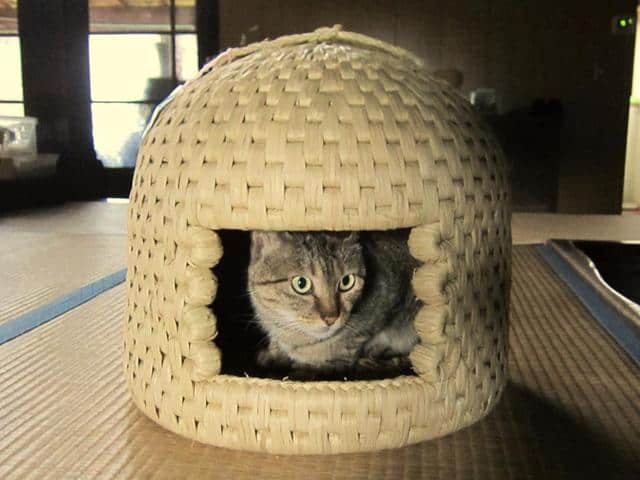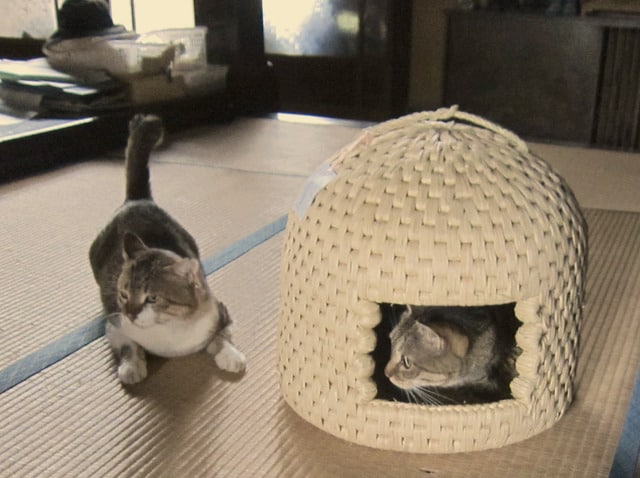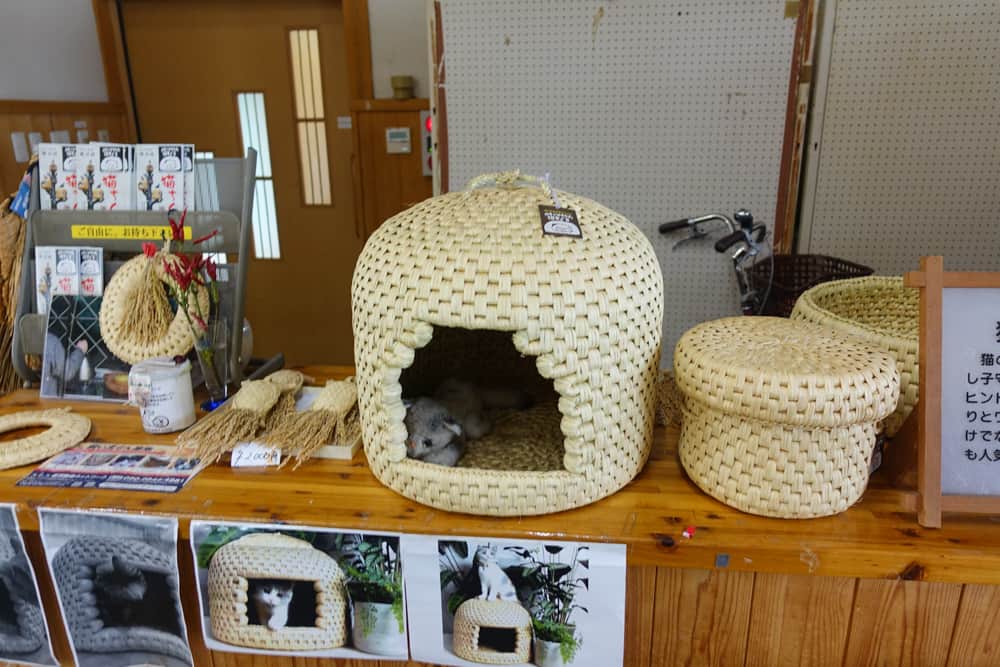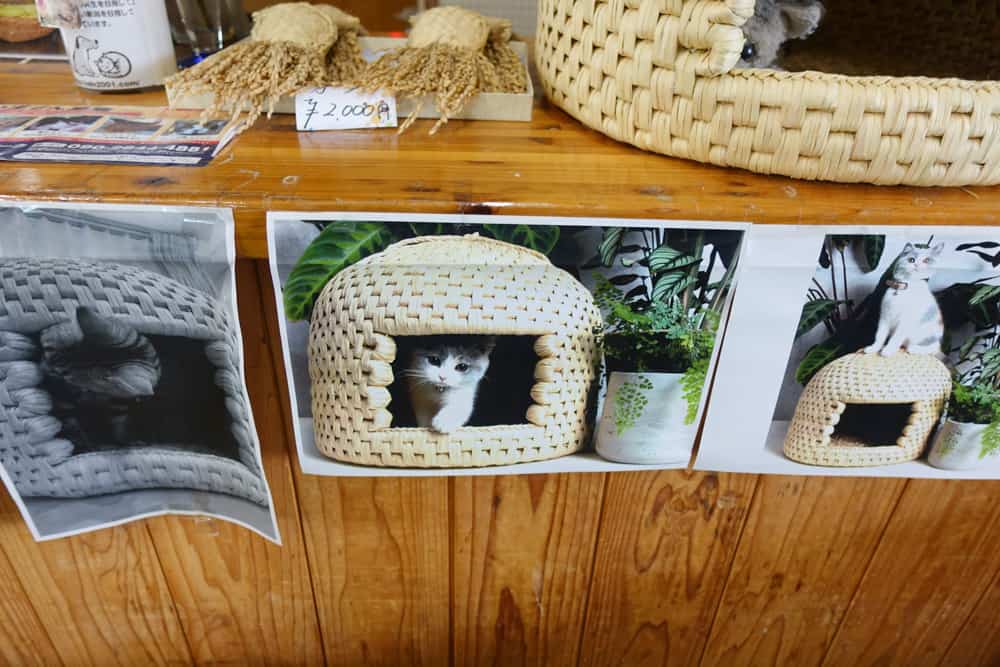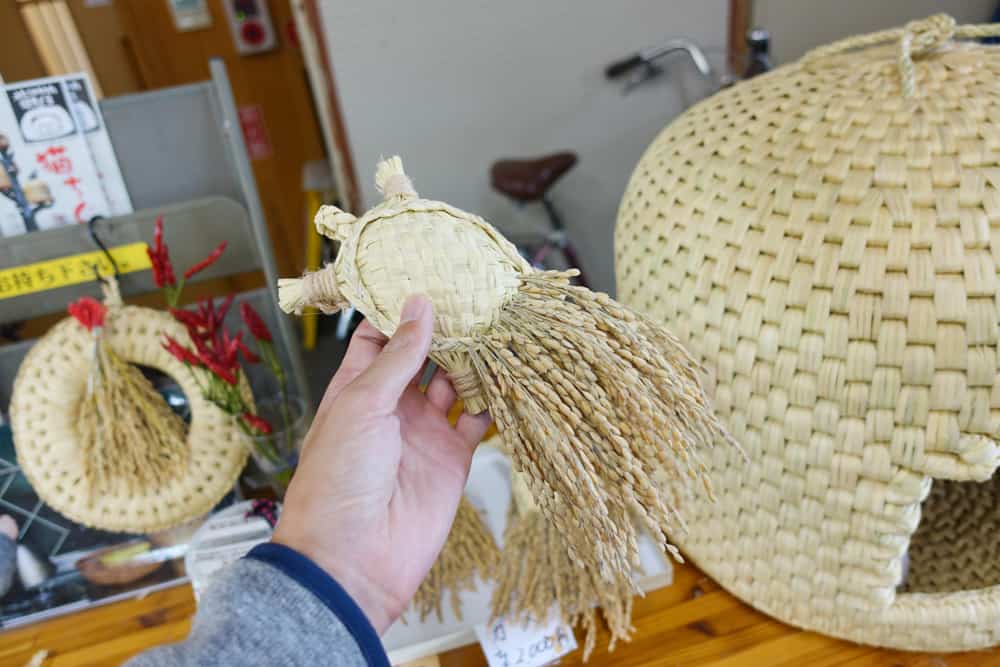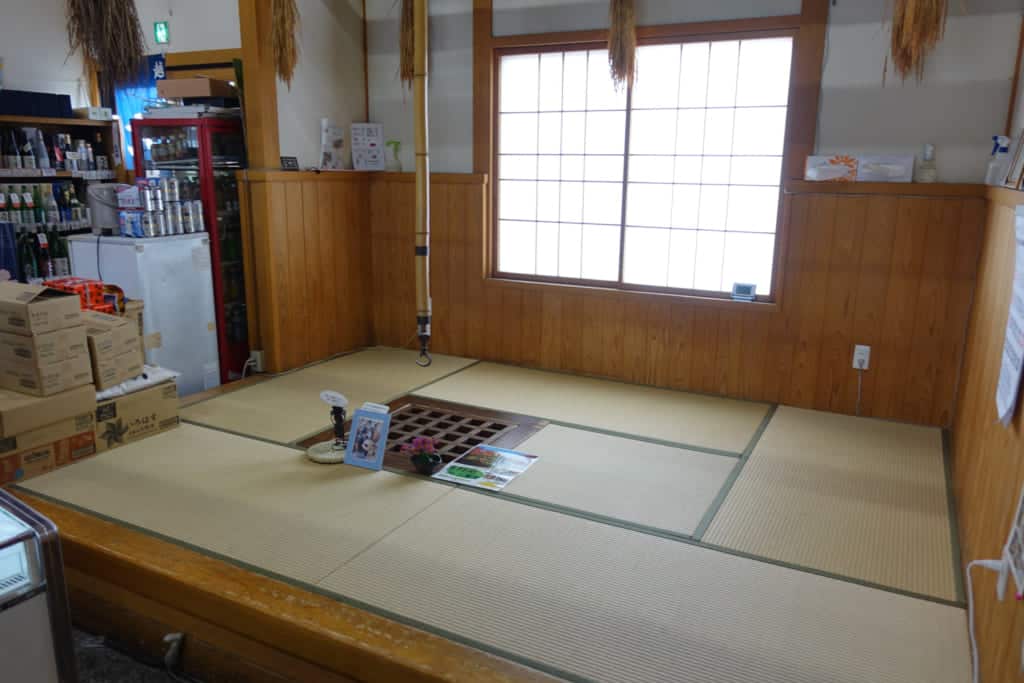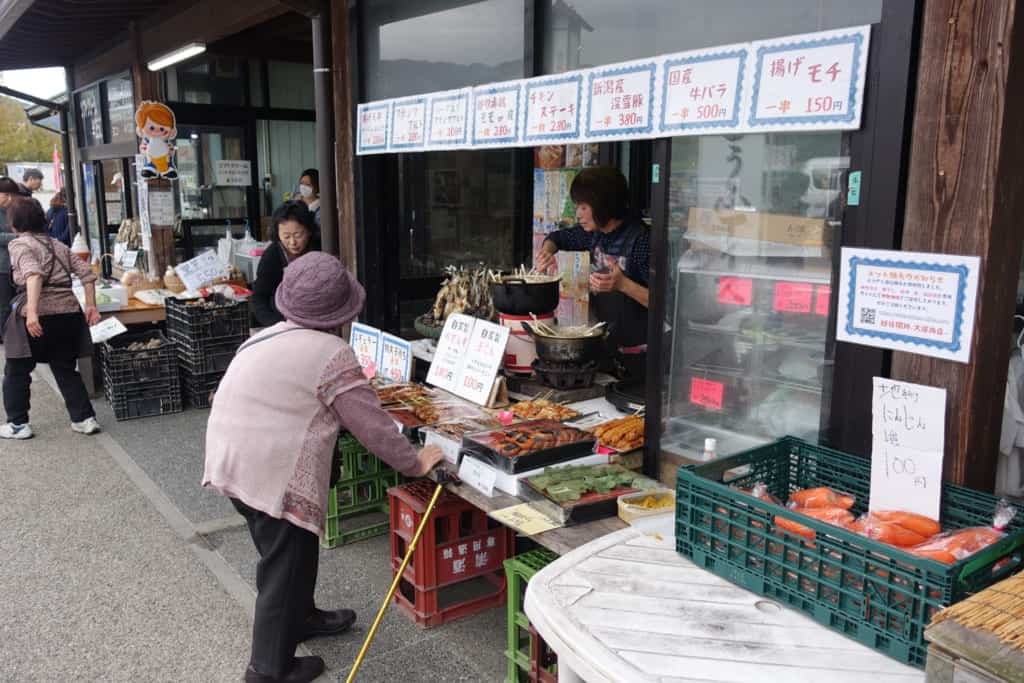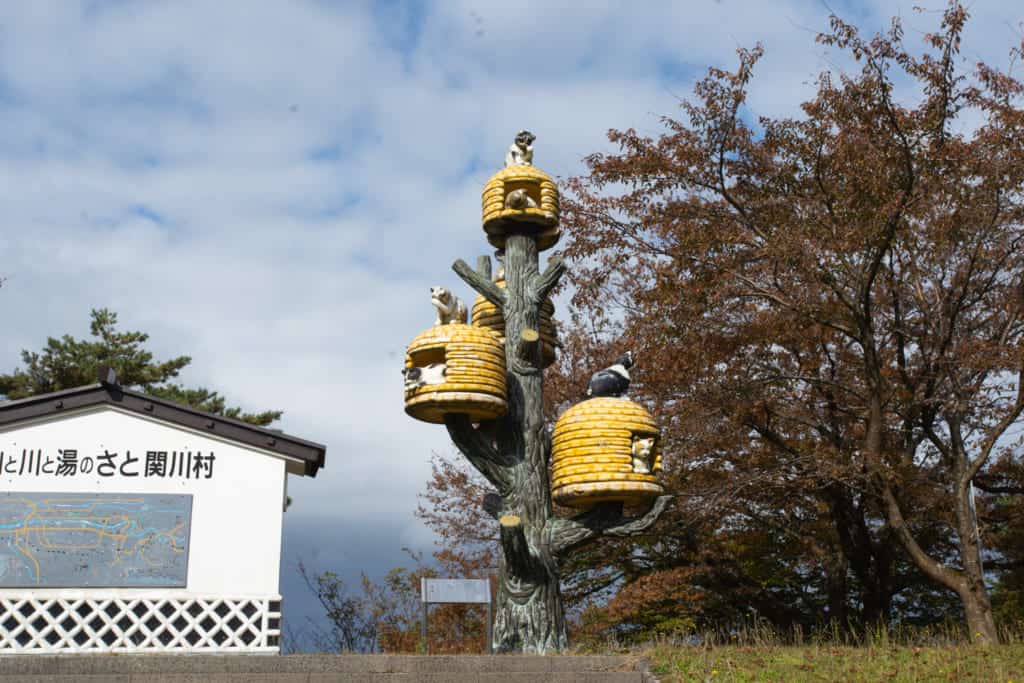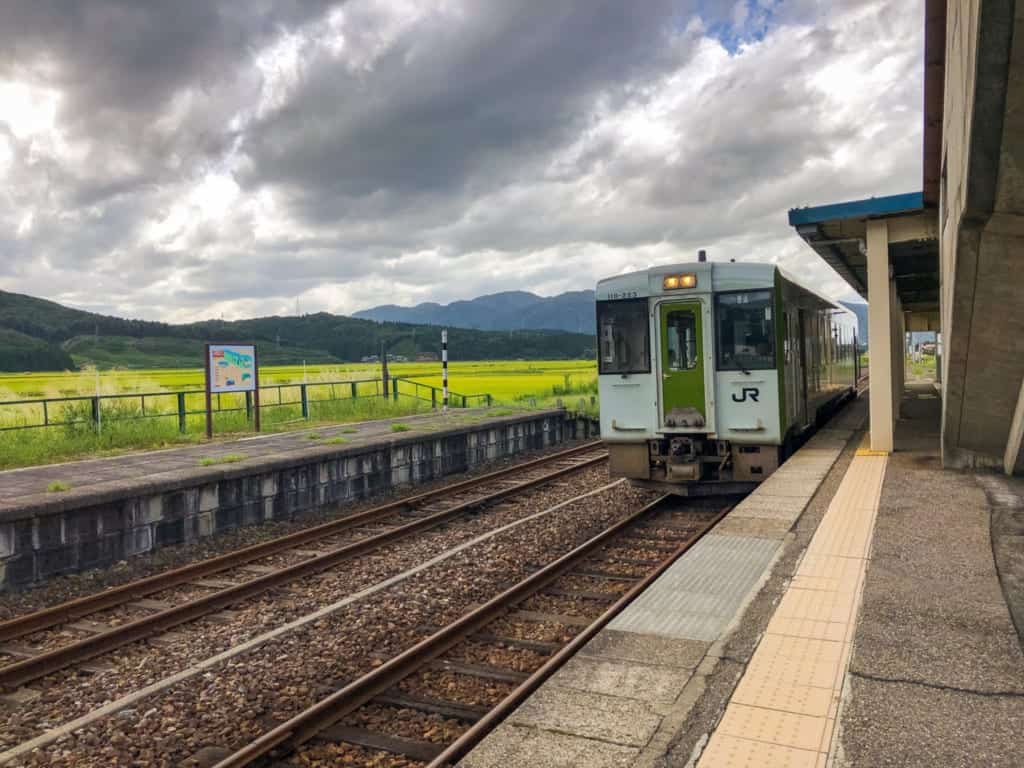Sponsored by Sekikawa Village
Its no secret that people here in Japan absolutely love cats. At almost every port, downtown area, and even on multiple islands that locals refer to “cat islands,” you can see many friendly stray cats that are very well cared for by the people here. The small farming village of Sekikawa has its own unique way of showing this love for felines (and small dogs) through a unique and elaborate craft that requires weeks of skilled labor by local artisans.
These crafts are called neko chigura, or mini cat houses made out of woven rice husks are small enclosed spaces that cats love. These neko chigura were made in Sekikawa during the winter months when this region sees long periods of heavy snow. During these periods, the people of Sekikawa make a variety of crafts utilizing the husks of rice available to them from the harvest season in the Fall. These crafts help supplement the income of these farming families as well as serving as an important cultural asset to this community.
The neko chigura take over two weeks to complete and require a high level of skill and concentration to make. Currently, there are only 40 artisans in Sekikawa that make them and they can cost over $200 for a single neko chigura.
Despite the price, the demand for these little houses is so high that potential buyers must wait months to be able to buy their own.
You can see some of these neko chigura on display at the Sekikawa Michinoeki nearby Echigo-Shimoseki Station. Here you can also see and buy a variety of other crafts made utilizing the same techniques by these local artisans. This included some small rice husk dolls that were only 2,000 yen (roughly $20).
I spoke with one of the staff at this shop about the neko chigura and she told me how the hollow structure of the rice husks help insulate cats in the winter while the ventilation also keeps them cool in the summer. She also told me that despite the high price and long waiting time for these crafts, they can last decades before needing any maintenance work. I also learned that there are some larger versions that can accommodate small dogs as well.
Inside this shop, there is also a tatami mat craft area where some of the artisans will gather to work on neko chigura for public viewing. Unfortunately, I arrived too late on a weekday and was unable to watch them work, but I was happy to see that they had some lively food stands outside the shop selling a wide selection of local food and fresh fruit.
The neko chigura of Sekikawa represent one of the main symbols of this small town and they even have a large statue nearby the Arakawa River of these cat houses with several cats in and on top of them. Although it is very difficult to be able to purchase one of these cat houses, it was very interesting to see how this town managed to make a cultural icon out of its love for one of this country’s most adored pets.
You can find a website dedicated to neko chigura here.
Access and Practical Information
It takes about 4 hours from Tokyo to the closest station, “Echigo-Shimoseki station” by train. First, take the Joetsu Shinkansen from Tokyo to Niigata. From Niigata, take JR Uetsu Line to Sakamachi station then transfer to Yonesaka Line to Echigo-Shimoseki station.
Another route is to take the Yamagata shinkansen to Yonezawa station, then transfer to JR Yonezawa line to Echigo-Shimoseki station. It also takes about 4 hours. In any of these sections, you can use the JR Pass.
You can also find information about the region on the Sekikawa Village Tourism Association. (Only in Japanese)
You can learn about Sekikawa Michinoeki Chigura from here. (Only in Japanese) It takes 10 minutes to Sekikawa Michinoeki Chigura from the nearest station Echigo-Shimoseki station on foot.
You can see a neko chigura making demonstration from 10:00-15:00 excluding Saturdays and holidays: the 3rd Wednesday of every month (the following day if it is a national holiday). Here, you can buy this region’s souvenirs such as one of the representative brands of rice “Iwafune’s Koshihikari” which is Sekikawa’s local specialty and enjoy a footbath.
You can find the Sekikawa Michinoeki Chigura on the map below.


